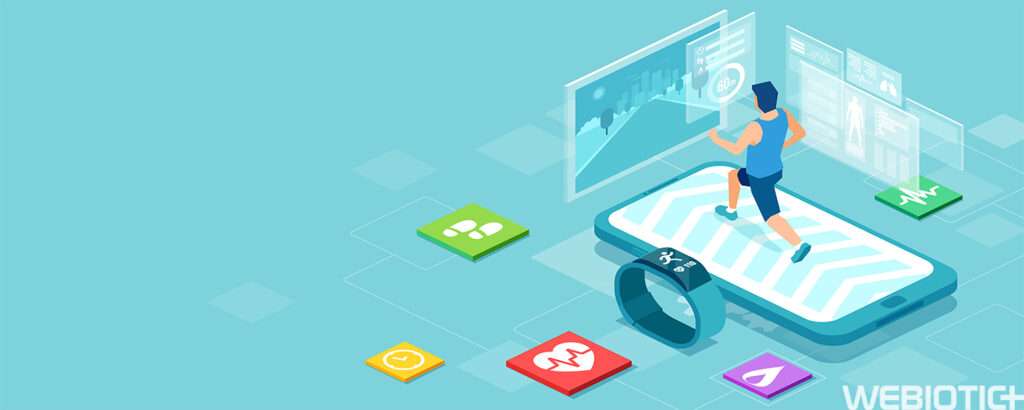
If Covid-19 has taught us anything, it’s that people can get used to and even prefer doing some things from the comfort of their homes, whether it’s work or workouts.
It’s safe, convenient, and best of all, it’s free!
Check out the video below to learn how you can create a gym management software app.
Since the pandemic hit more than a year ago, there’s been an explosion of online classes as well as fitness apps.
According to Bloomberg, while 75% of people surveyed said they would eventually like to return to the gym and their pre-pandemic workout routines, many indicated that they would retain the virtual component of their current fitness regimes.
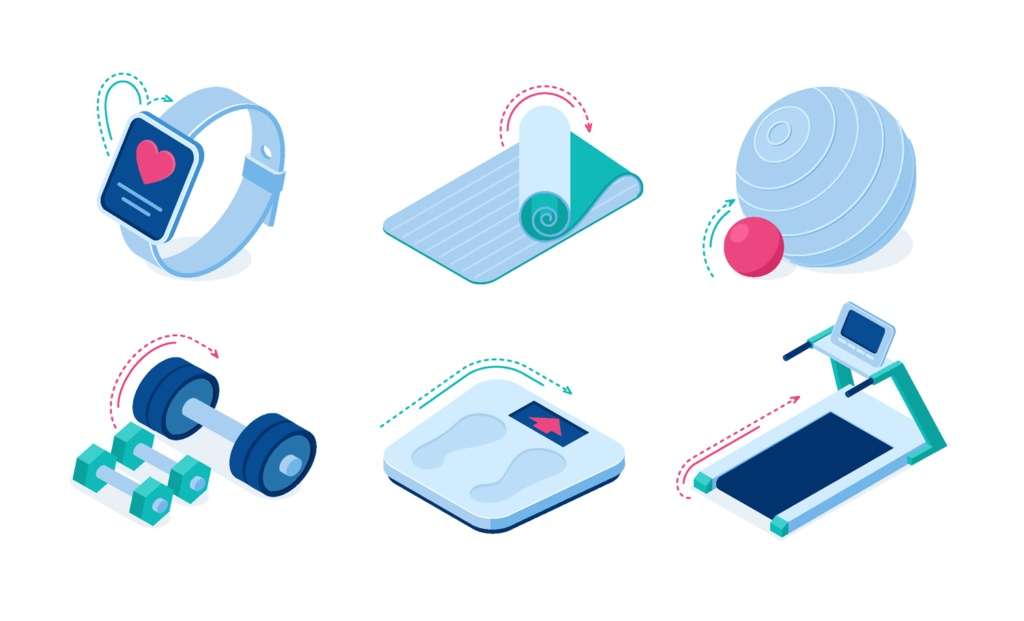
More and more gym-goers are adopting a hybrid model of in-person/online workouts, even as gyms have opened up and dropped mask mandates.
This means fitness apps are here to stay and you can expect to see more emerge.
In this article, we’ll take a deep dive into the popular Fitness Buddy app’s design, functionality, and overall performance.
Table of Contents
Fitness Buddy by Azumio Inc. totes itself as being “The world’s most comprehensive fitness application”, but what does that mean exactly?
In short, it’s an exercise app that offers a wide range of workouts users can try either at the gym or at home along with customized meal plans and more.
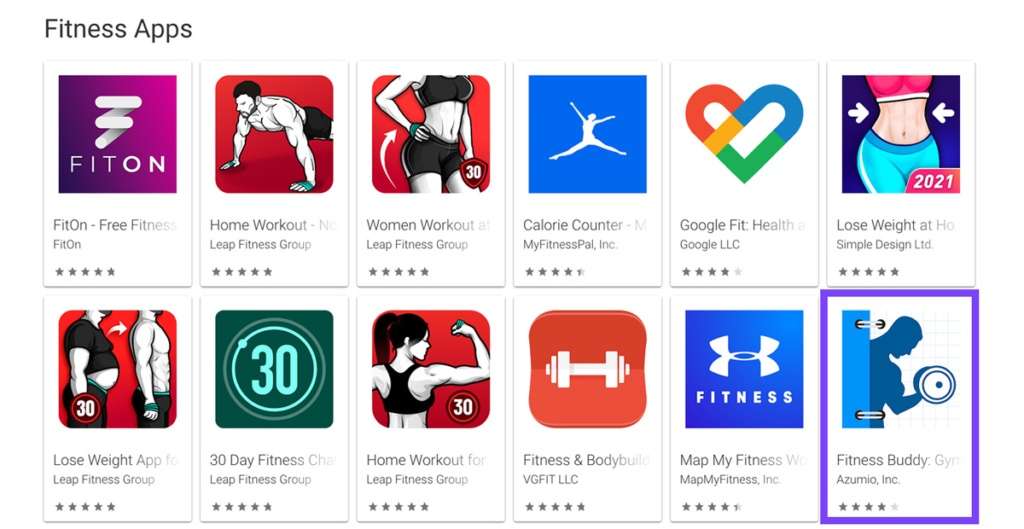
Let’s take a look at the main features this app has to offer and how it stands out from other fitness apps like it.
1.1 Home/Gym Workouts
With one of the largest exercise databases, Fitness Buddy helps users discover and learn new exercises.
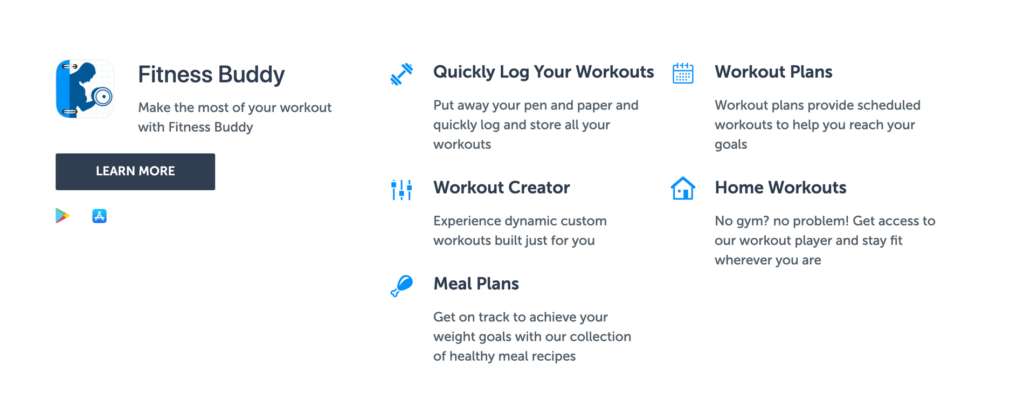
Their library consists of over 2400 unique exercises and over 20 comprehensive workout programs for both beginners and veterans.
Each comes with photo and video instructions so you can follow along and achieve the perfect form.
You can search for an exercise or go through their alphabetical ordered list.
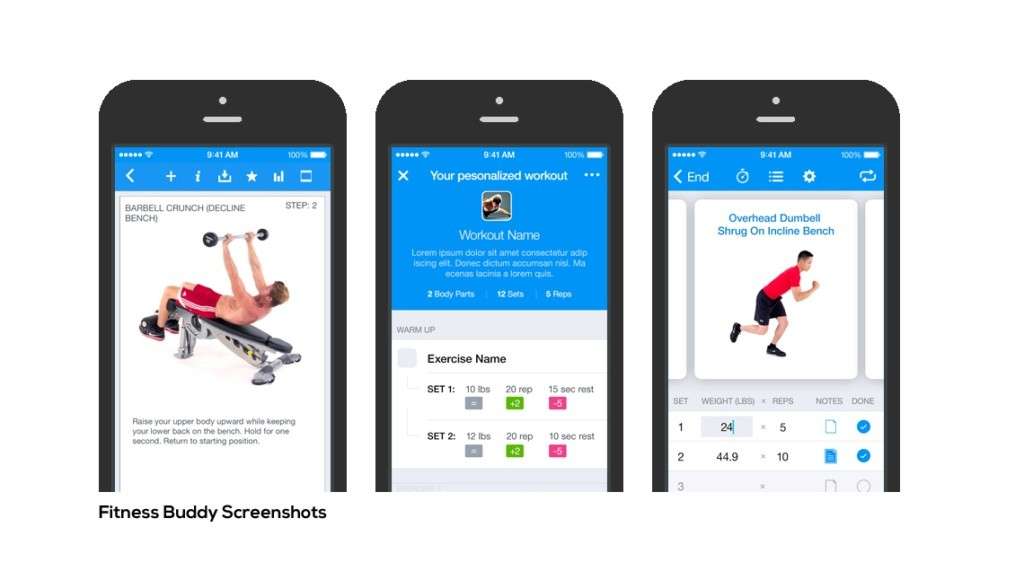
Each exercise will offer some information, like the muscles it targets and the equipment (if any) you’ll need.
If you’re not sure where to start, their Discover page offers a Workout of the Week exercise as well as workout categories, like workout type, body specific workouts, and Fitness Buddy
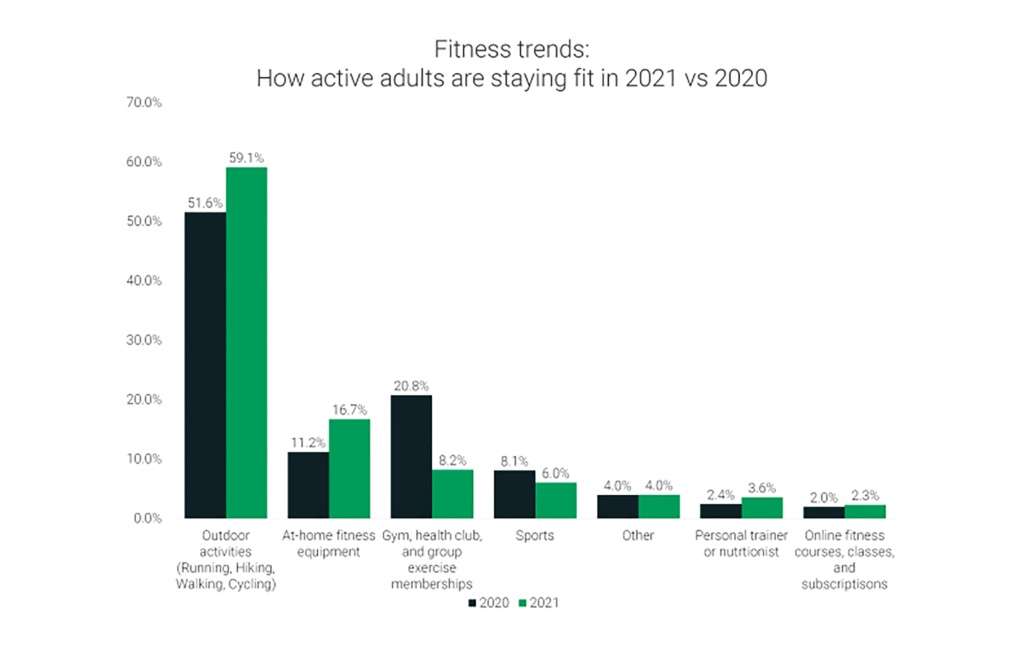
Photo Credit: runrepeat.com
For example, if you look at their body specific category, you’ll find core, lower body, total body, and upper body workouts.
PRO TIP:
With their Premium Plan, you can create tailor-made workouts based on your experience level, fitness goals, and equipment available to you.
1.2 Tracking
Tracking your workouts is another primary feature of Fitness Buddy.
You can use the app to track your workout sets and coordinate them with the rest period countdown timer.
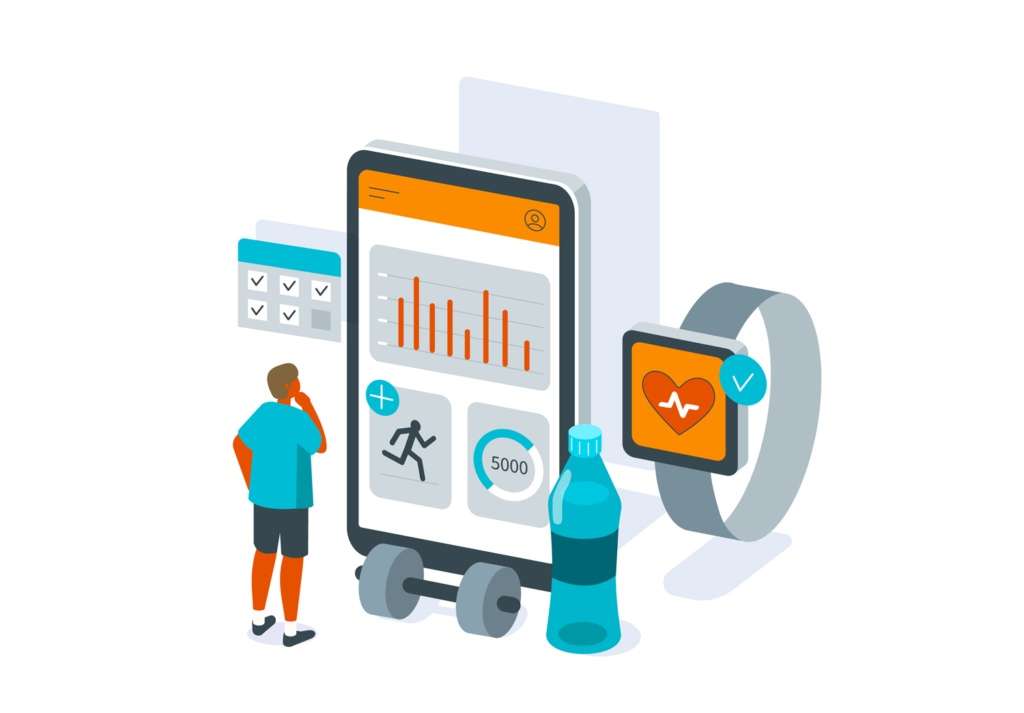
The app’s tracking feature lets users record their workout stats and keep track of daily exercises, body fat percentage, bodyweight, and body measurements, all of which you can easily view on their graphs.
This feature is helpful in seeing the numbers and how you’ve improved over time.
It also uses this data to automatically increase your workout repetitions, weights, and duration.

Photo Credit: acsm.org
Here are other tracking features:
- Track workout progress and calories
- Access to a personal fitness calendar and daily exercise schedule
- Track steps with their Apple Health integration
1.3 Meal Plans
Fitness Buddy’s meal plans are designed to help users achieve their health and fitness goals by giving them a customized diet plan based on their specific dietary needs and preferences.
These meal plans are created by certified nutritionists and dietitians and take into consideration factors like the user’s body type, calorie intake, and nutrient requirements.
Fitness Buddy Meal Plans
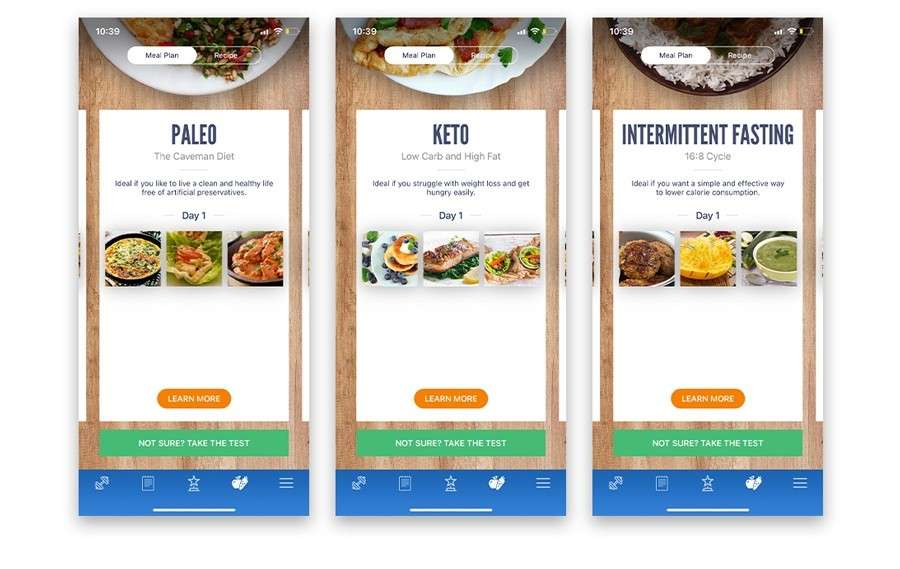
The app offers a wide variety of meal options, including options for different dietary restrictions such as vegetarian, gluten-free, and low-carb diets.
Here’s more offered with their meal plans feature:
- Premium calorie counter that lets users tailor their calorie and macro budget goals
- Calorie and macro quick add feature that saves time
- Unlimited recipe creation
- Find recipes from their library
- Sort through recipes by breakfast, lunch, and dinner
- Sort through recipes by dietary restrictions, like vegetarian, beef-free, dairy-free, egg-free, lactose-free, nut-free, low cal, low carb, and more.

1.4 Pricing
Like most fitness apps, Fitness Buddy has a free version and a paid version.
While the free version offers some basic features, like access to their workouts and exercises, the Premium version lets you track your fitness and body metrics as well as create custom workouts.
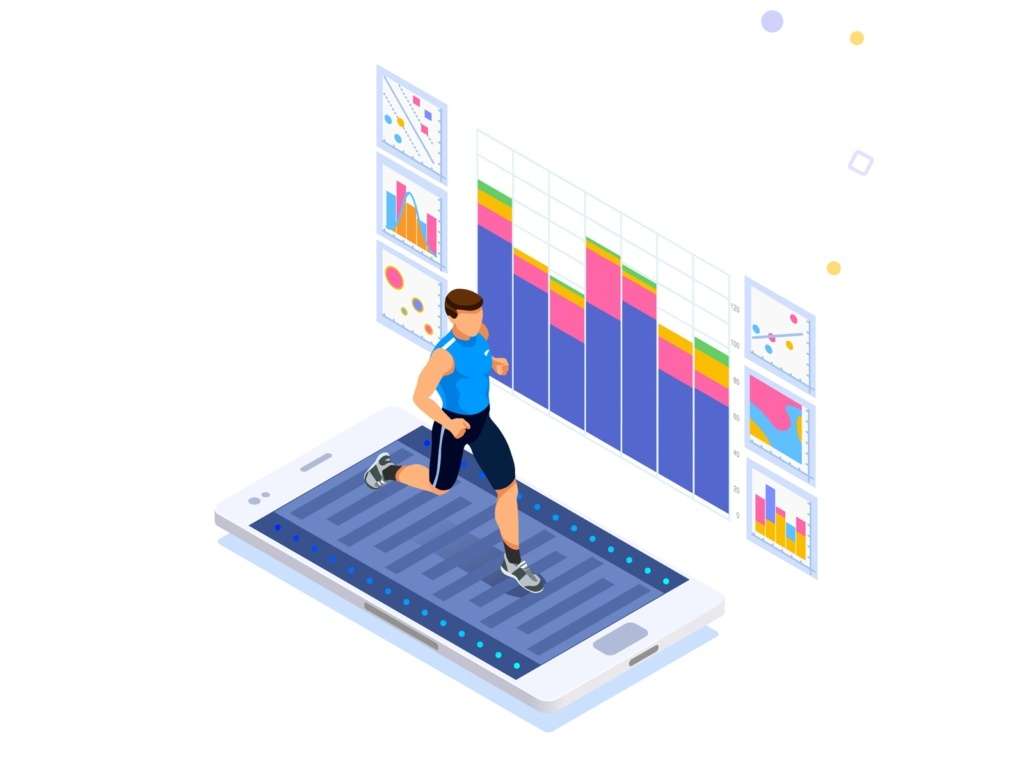
Free Version
- Detailed workout and exercise journal
- 16 expert curated gym workouts
- Access to 500 exercises in their library
- Upper body only custom home workout creator
Paid Version
- Detailed workout and exercise journal
- 75+ excerpt curated gym workouts
- Access to 2400+ exercises in their library
- Unlimited access to their custom home workout creator
- 1000+ HD exercise videos
- Personalized training plans
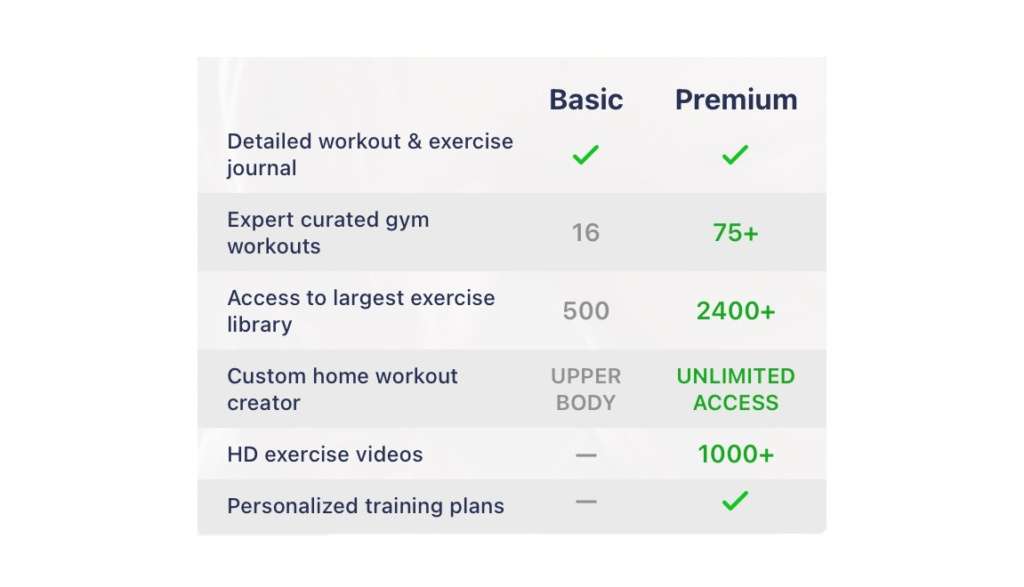
Fitness Buddy Premium is $29.99 for a year or $9.99 a month. Users also have the option to try Premium free for three days.
Overall, Fitness Buddy has some nice features, but to access them, you’ll need to pay for their Premium plan.
Having a solid lineup of features will only get an app so far.
Users expect an easy and intuitive experience when using an app and have little toleration for apps that miss the mark.
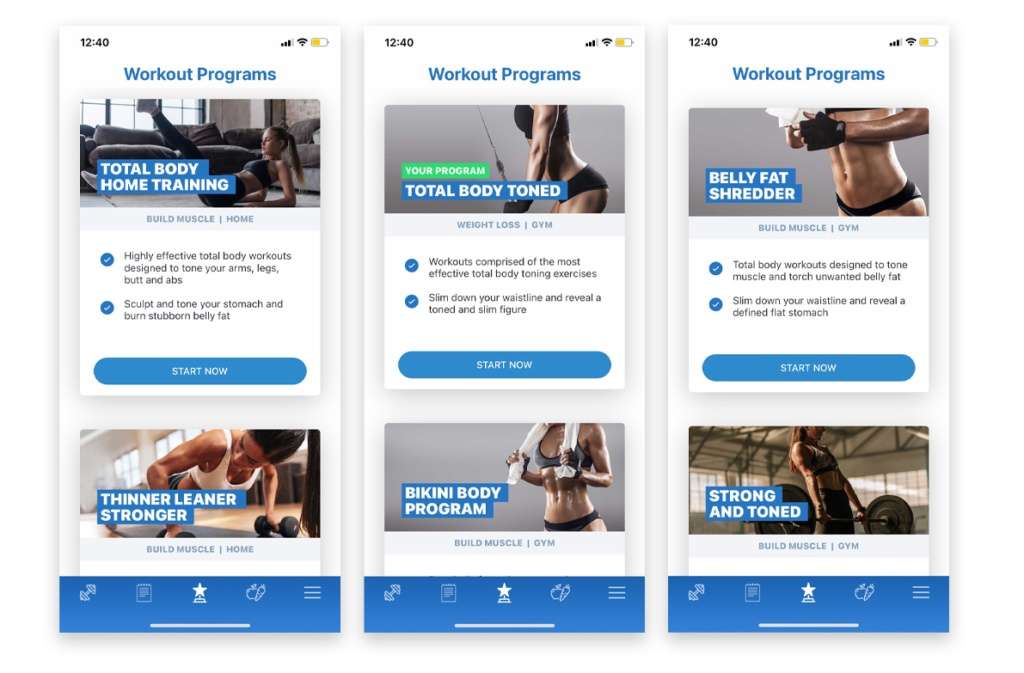
In fact, one out of every five users will abandon an app after just one use. So first impressions are everything.
Fitness apps often come with all kinds of features and functionality, and it’s easy for various screens in the app to get cluttered.
Some features are common, like login or checkout screens, and others have a more specific purpose.
PRO TIP:
With such a saturated mobile app market, it’s absolutely crucial for an app’s UX and UI to make it as easy as possible for users to find exactly what they need.
Let’s take a look at how Fitness Buddy holds up when it comes to user experience and design.
2.1 Signup Process
When you open the Fitness Buddy app for the first time to register, the app takes you through a short goal setting process.
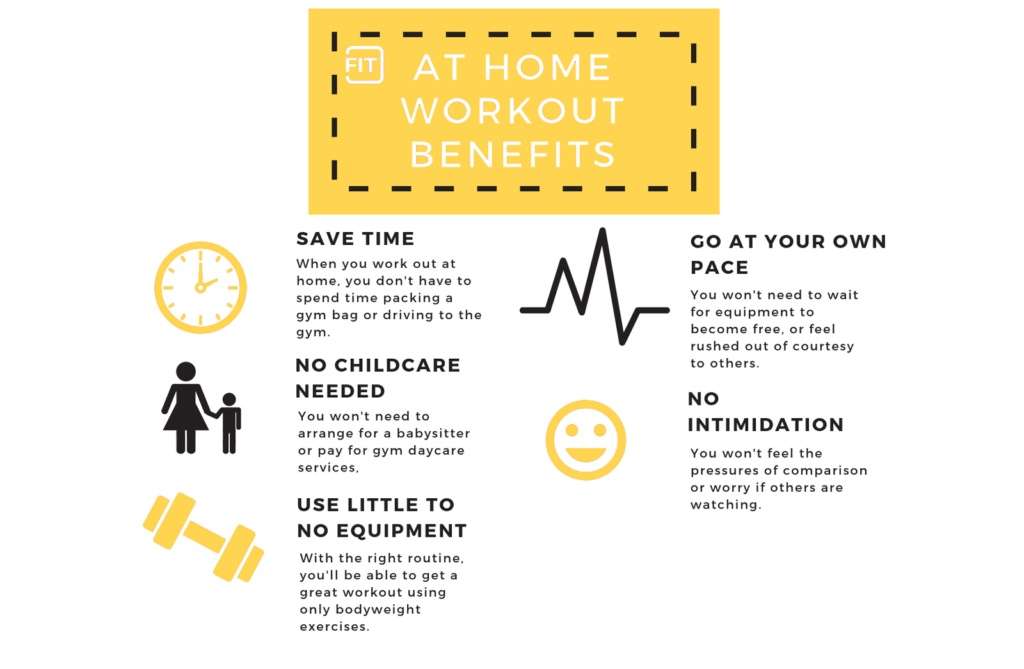
Users will need to submit some basic information in order to curate the best workout program, like:
- Gender
- How often you work out
- Where you work out (gym or at home)
- What your goal is (build muscle, weight loss, etc)
- What you want to focus on (with options based on previous answers)
For example, if you input that your goal is to lose weight, the app will ask if you want to focus on getting abs or a flat stomach or getting lean.

It’ll then recommend workouts that will help meet this goal, like total body workouts that are designed to strengthen and add muscle as well as workouts that help slim down your waistline.
This process is seamless and is a great way to kick off the app for new users.
It serves a clear purpose in guiding users to the app’s most useful content so they can achieve their goals.
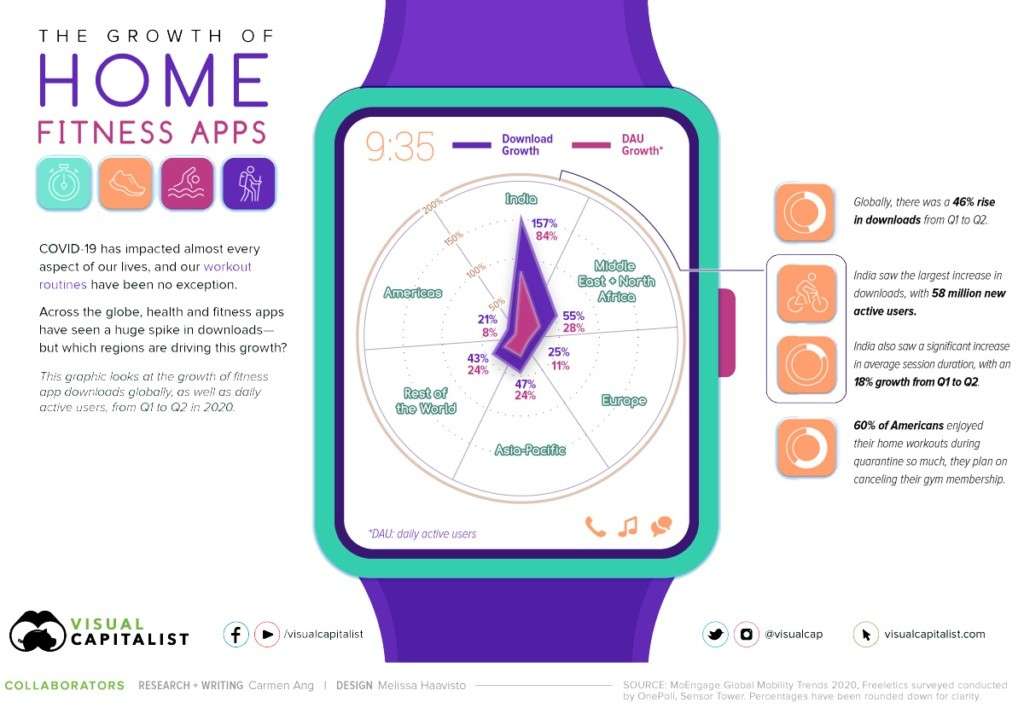
The only drawback is that it’s not easy to change your workout goals once submitted. You’ll have to dig through the app to find where to update this information.
2.2 Home Screen
When you first login to a fitness app, you’ll typically land on the app’s home screen.
Home screens for fitness apps should have important information, like a user’s progress towards a specific goal, training courses they’re working on, and so on.
Fitness Buddy Home Screen
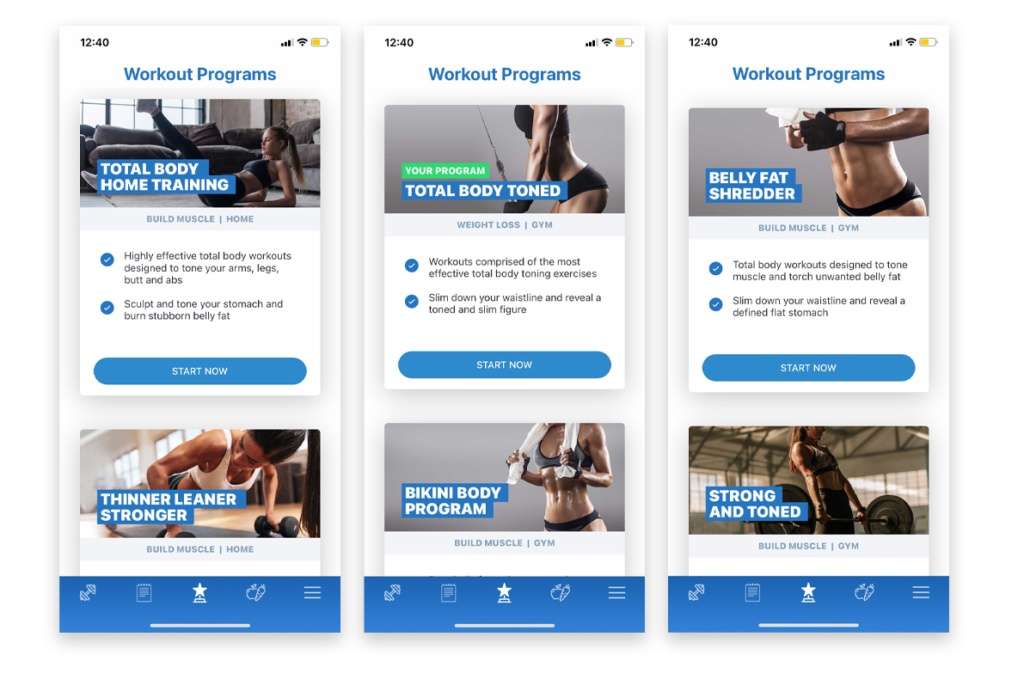
It should be kept simple and yet work to motivate users to keep using the app and discover the app’s features.
Including the wrong kind or too much content could confuse users, so it needs to be done just right.
When you login to the free version of the Fitness Buddy app, you’re taken to a screen that highlights Fitness Buddy’s Premium plan.
It showcases their main features and some testimonials.
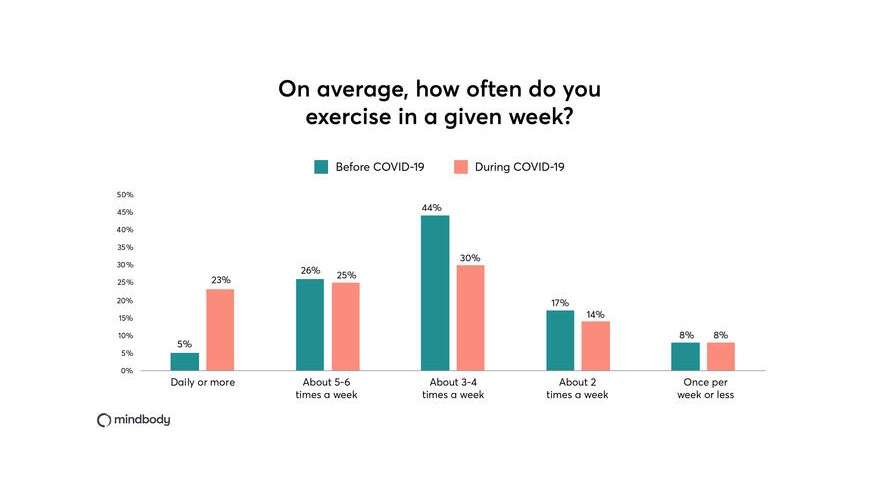
Each section on the screen has a call-to-action (CTA) button to get the paid plan, which can get a little annoying if you’re opening the app every day.
If you have the paid version, logging in will take you to a home page with recommended workout programs based on the information you put in when you first registered.
2.3 Discover Screen
The Discover screen of Fitness Buddy is designed to be a one-stop-shop for users to explore and discover new workout and nutrition information. This screen is a hub of info and resources to help users achieve their health and fitness goals.
It includes a variety of features and resources, like articles and videos on fitness and nutrition topics, recipes, and workout challenges.
Users can browse through different categories to find information that’s relevant and useful to them.
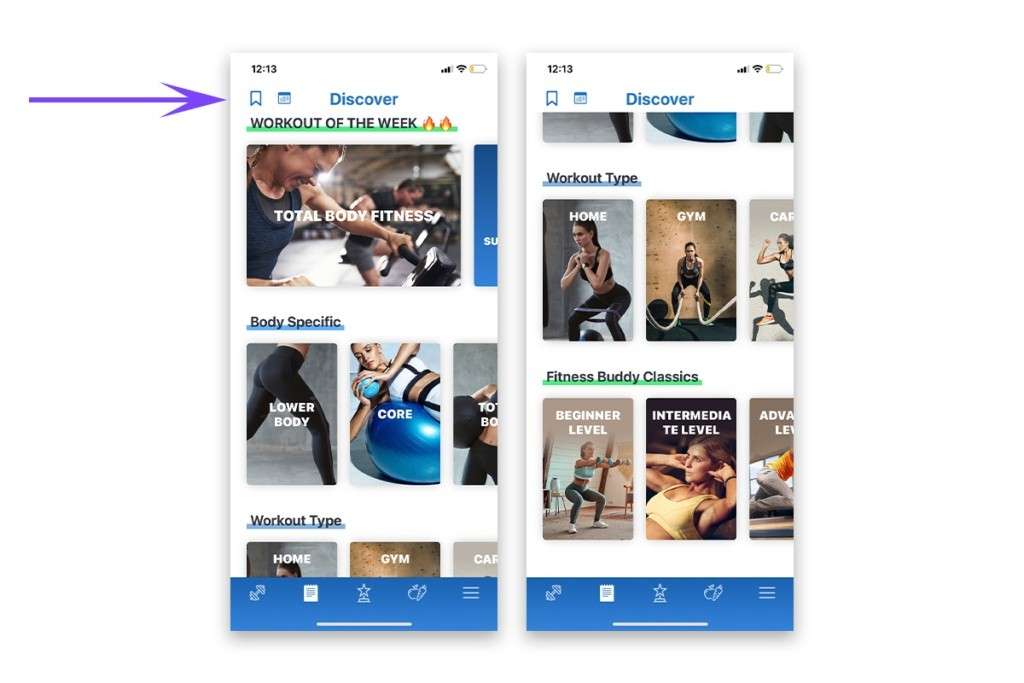
Additionally, the Discover screen also includes a community section where users can connect and engage with other fitness enthusiasts, share their progress, and offer support and encouragement.
2.4 Navigation
Mobile navigation is key in creating a seamless experience for users.
Anyone using the app should be able to navigate between screens easily and without confusion.
Fitness Buddy keeps things pretty standard by including a menu bar at the bottom of the screen. You can also click on the large plus sign button to open up more menu options.
Fitness Buddy Navigation
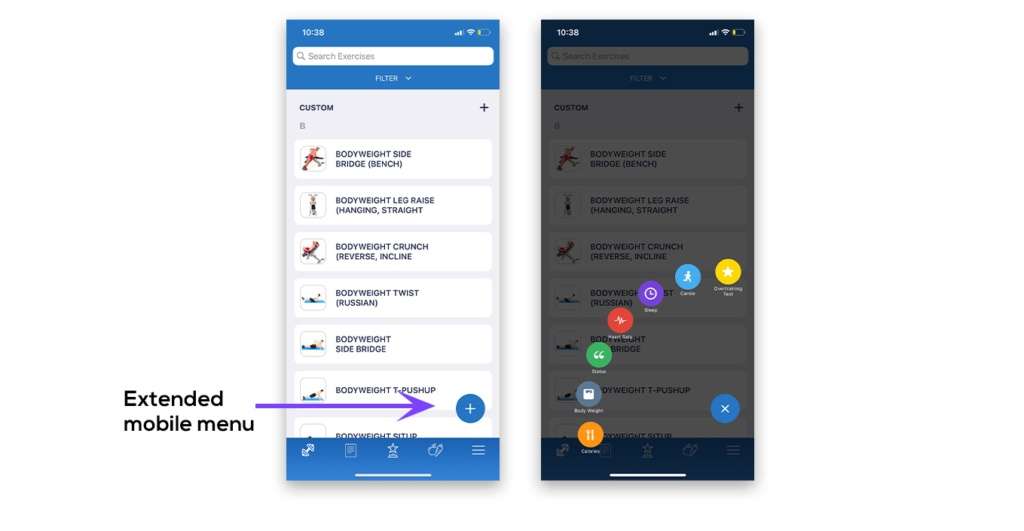
This layout makes sense because it avoids cluttering up the menu bar with too many items.
Instead, the menu bar features only four icons that represent their app’s primary features, but users can still easily access additional features.
The only downside to this is that you can’t access the plus sign extended menu from every screen in the app.
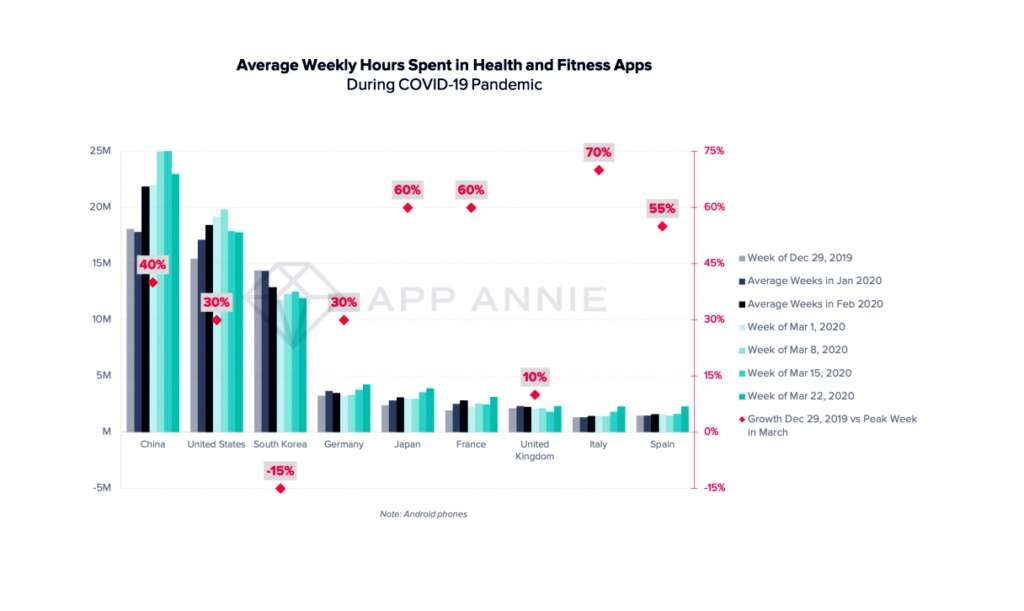
Overall, Fitness Buddy has a pretty generic fitness app design. Nothing stands out as special or remarkable, but it’s fairly easy to navigate.
The free version is less appealing since the screens tend to feel more cluttered with ads and content pushing you to buy the paid version.
While Fitness Buddy certainly has a wealth of features users expect from a fitness app, there are a few areas where the app falls short.
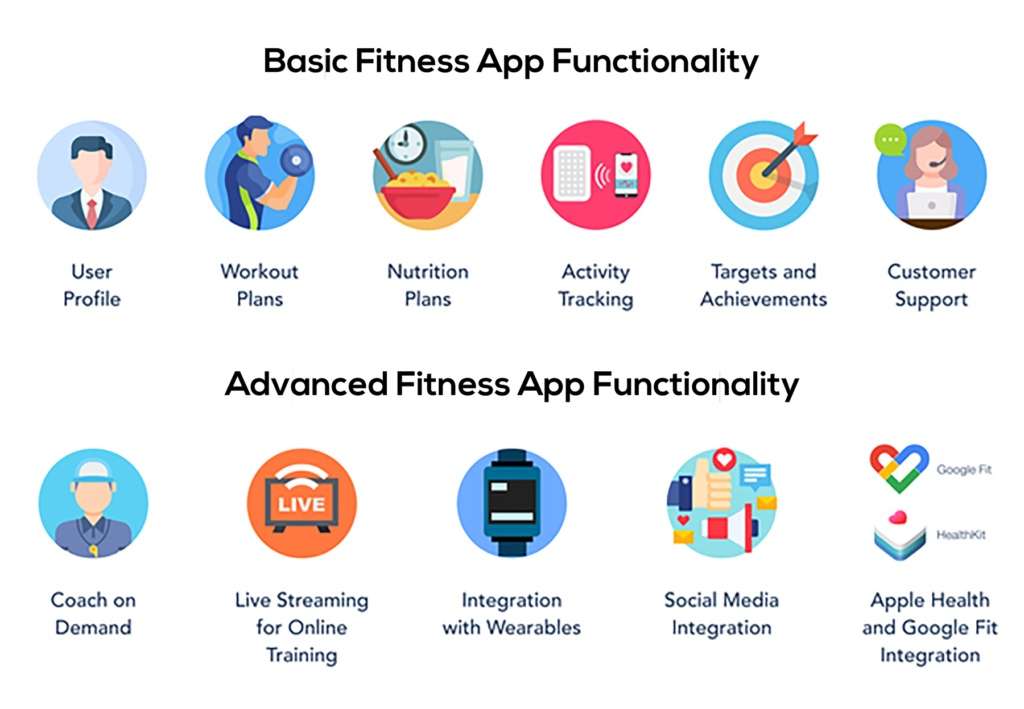
3.1 Limited Integrations
Fitness Buddy currently only integrates with Apple Health for tracking steps, which is a pretty big limitation.
It doesn’t sync with wearables, like Apple Watch or Fitbit.
Fitness Buddy’s Apple Health Integration
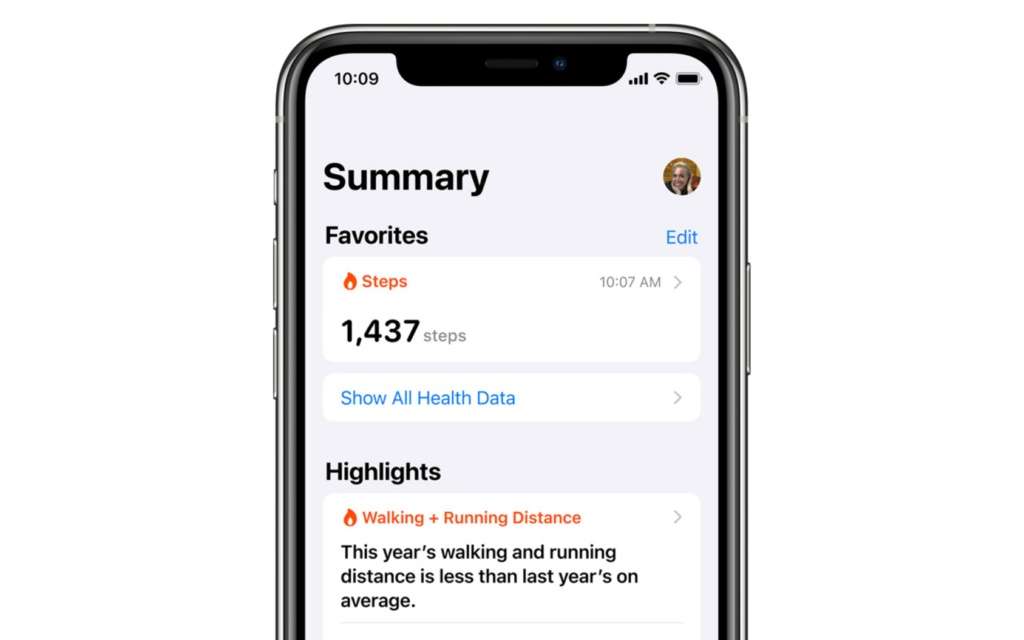
MyFitnessPal is another fitness app and has over 50 app and device integrations so users can sync their workouts.
3.2 Limited Free Version
While nearly every fitness app will have a free and paid version, Fitness Buddy leaves much to be desired with their free version.
The free version, also known as the “basic version,” has certain limitations compared to the premium or paid version of the app. Here are some of those limitations:
- Limited workout routines: The free version only offers access to a limited number of workout routines and exercises. If users want access to a wider range of workout routines, they’ll need to upgrade to the paid version.
- No meal plans: The meal plan feature isn’t available in the free version of the app. Users who want access to personalized meal plans and nutrition information need to upgrade to the paid version.
- Limited progress tracking: The free version only offers limited progress tracking features, like the ability to log workouts and track weight.
- No community features: The community features, like the ability to connect and engage with other users and participate in challenges, aren’t available in the free version of the app.
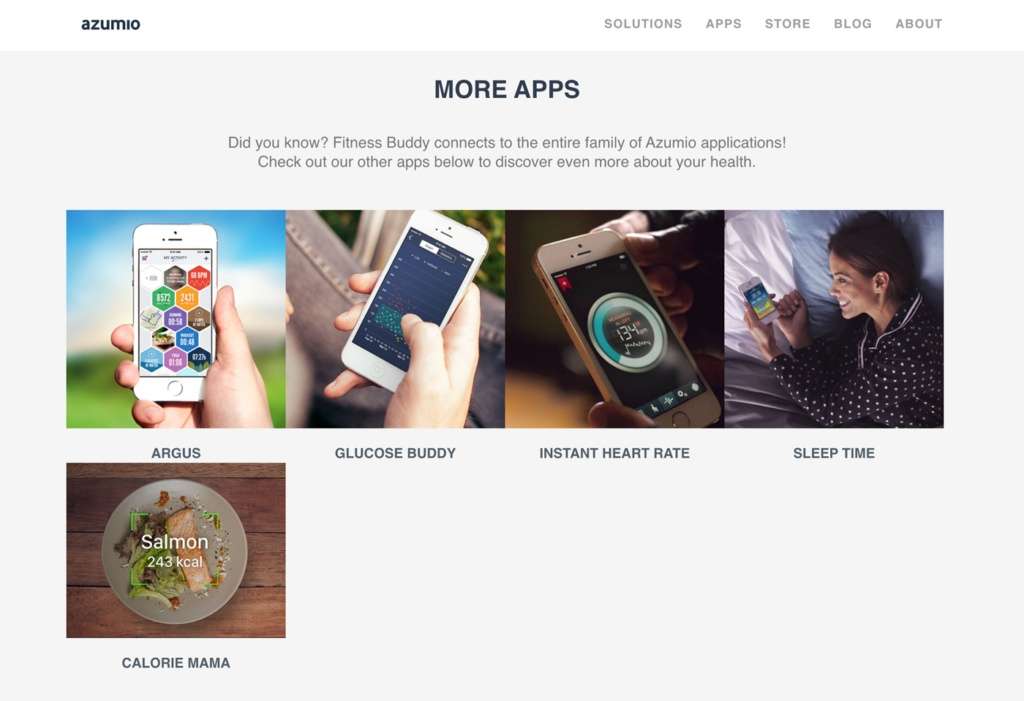
In short, users can’t really appreciate their core features unless they pay for the premium version.
3.3 Ads and Paid Version Pushes
While the paid version of the app has a nicer design, the free version is somewhat lacking.
Every screen pushes users to buy the paid version and there are ads which can give the app a more cluttered look.
Most apps will include CTAs for buying the pro version, but some apps are better at doing it in a more discreet way.
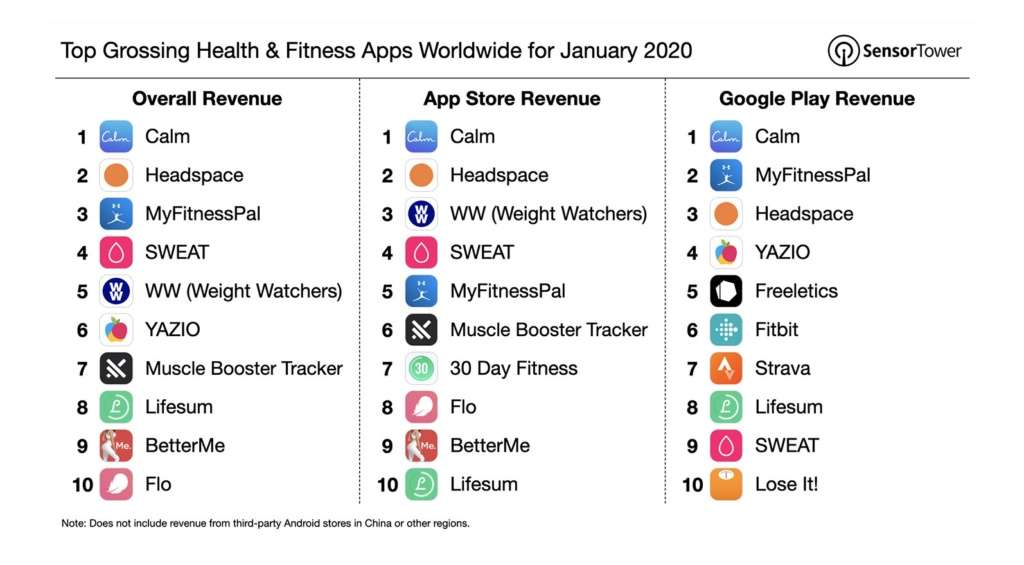
Fitness Buddy offers a lot in the way of features and functionality.
With the paid version, users have access to a huge library of workouts, fitness routines, and exercises for all levels and goals.
A big limitation is their lack of integrations, but overall, it stands up well when comparing it to other apps in the fitness space.
If you’re interested in filling in the gaps of Fitness Buddy and other apps like it with your own fitness app, we can get you started with our Simple Starter package.
This is a three-step process that transforms your app ideas and creates a blueprint on how to move forward.
Which fitness app are you using and how does it compare to Fitness Buddy?




